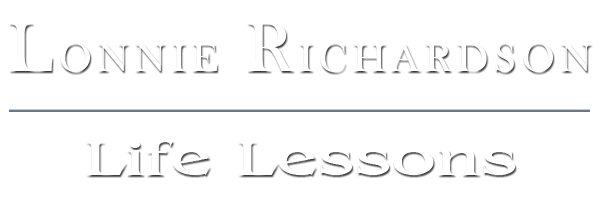Bible Study: Old Testament
Okay, today we are going to explore the Old Testament briefly to some extent. Actually, we are going to merely begin to explore the Old Testament briefly. Have you ever wondered why the Books of the Old Testament are arranged in the order that they are arranged in? Hopefully, I can offer some clarification on that matter.
The Old Testament is divided basically into five elements.
First, there are the Books of Law. These include Genesis, Exodus, Leviticus, Numbers, and Deuteronomy. These Books are also referred to as the “Books of Moses”, and the “Pentateuch”. Additionally, these five Books (the first five Books in the Bible) are referred to as “The Torah” in Jewish culture.
Secondly, there are the Books of History or the historical Books. These include Joshua, Judges, Ruth, I Samuel, II Samuel, I Kings, II Kings, I Chronicles, II Chronicles, Ezra, Nehemiah, and Esther. These Books relate the history of the Old Testament from varying points of view. The study of the timelines is pretty amazing and is something that we will delve into in a later post.
Next, we have the Books of Poetry. Poetry in the Jewish culture occurs in several forms which I do not have the time to expound upon at this time. At this time, we are more concerned about the structure and arrangement of the Books of the Old Testament. You will notice, however, that when you read these books (in many of the translations) that the verses are presented in a poetic form. This section contains the Books of Job, Psalms, Proverbs, Ecclesiastes, and The Song of Solomon.
The Fourth section of the Old Testament is arranged according to what are known as the Major Prophets. The Books contained herein are Isaiah, Jeremiah, Lamentations, Ezekiel, and Daniel. It should not be misconstrued that these “Major Prophets” are more or less important than the “Minor Prophets” that follow. These Books of the Major Prophets are works that are longer and in great detail, containing great amounts of prophecy as compared to those that follow. Again, bear in mind that the prophecies contained in the Major Prophets are no more important than those in the Minor Prophets soon to be listed.
The last section of The Old Testament is the Minor Prophets. This title in no way indicates that the prophecies or the Books of the Minor Prophets are any less important than those of the Major Prophets. In fact Micah 5:2 prophecies that Jesus would be born in Bethlehem! This section includes the Books of Hosea, Joel, Amos, Obadiah, Jonah, Micah, Nahum, Habbakkuk, Zephaniah, Haggai, Zechariah, and Malachi.
So there you have it. You no longer have to wonder about the arrangement of the Books of the Old Testament. The Books are arranged according to their intended content and usage. They are arranged into Law, History, Poetry, Major Prophets, and Minor Prophets. It’s actually pretty simple. I’ll discuss more in detail breaking many aspects down into portions more easily digested at a later time.
Until next time, God Bless!
In His Grip,
Lonnie Richardson
BIBLE COPYRIGHTS: Any scriptures quote above have been copyrighted by one of the following bibles made available on the Internet for your personal use only. These Scriptures may not be altered or modified in any form and must remain in their original context. These Scriptures may not be sold or otherwise offered for sale.
Amplified Bible, Classic Edition (AMPC)
Copyright © 1954, 1958, 1962, 1964, 1965, 1987 by The Lockman Foundation
American Standard Version (ASV)
Public Domain (Why are modern Bible translations copyrighted?)
Amplified Bible (AMP)
Copyright © 2015 by The Lockman Foundation, La Habra, CA 90631. All rights reserved.
English Standard Version (ESV)
The Holy Bible, English Standard Version. ESV® Text Edition: 2016. Copyright © 2001 by Crossway Bibles, a publishing ministry of Good News Publishers.
King James Version (KJV)
Public Domain
Living Bible (TLB)
The Living Bible copyright © 1971 by Tyndale House Foundation. Used by permission of Tyndale House Publishers Inc., Carol Stream, Illinois 60188. All rights reserved.
The Message (MSG)
Copyright © 1993, 1994, 1995, 1996, 2000, 2001, 2002 by Eugene H. Peterson
New American Standard Bible (NASB)
Copyright © 1960, 1962, 1963, 1968, 1971, 1972, 1973, 1975, 1977, 1995 by The Lockman Foundation
New International Version (NIV)
Holy Bible, New International Version®, NIV® Copyright ©1973, 1978, 1984, 2011 by Biblica, Inc.® Used by permission. All rights reserved worldwide.
New Living Translation (NLT)
Holy Bible, New Living Translation, copyright © 1996, 2004, 2015 by Tyndale House Foundation. Used by permission of Tyndale House Publishers, Inc., Carol Stream, Illinois 60188. All rights reserved.
The Passion Translation (TPT)
The Passion Translation®. Copyright © 2017 by BroadStreet Publishing® Group, LLC.
Used by permission. All rights reserved. thePassionTranslation.com
PAID ENDORSEMENT DISCLOSURE: To be able to continue supporting the blogging activities on this website (plus the cost of hosting, etc.), we may receive monetary compensation or other types of remuneration for the endorsements or recommendations to any products or services from this site. We are an affiliate of Amazon.com and links we provide out to Amazon.com are affiliate links and we will receive a very small commission on anything you purchase within 24 hours of clicking on one of our links. 

 I grew up in Northeast Louisiana in a very rural area five miles east of Kilbourne. I work as a Licensed Practical Nurse in a nursing home providing care for people with various forms of dementia. I have a Bachelor of Science Degree in Religion from Liberty University and I am an ordained Deacon at our church,
I grew up in Northeast Louisiana in a very rural area five miles east of Kilbourne. I work as a Licensed Practical Nurse in a nursing home providing care for people with various forms of dementia. I have a Bachelor of Science Degree in Religion from Liberty University and I am an ordained Deacon at our church,